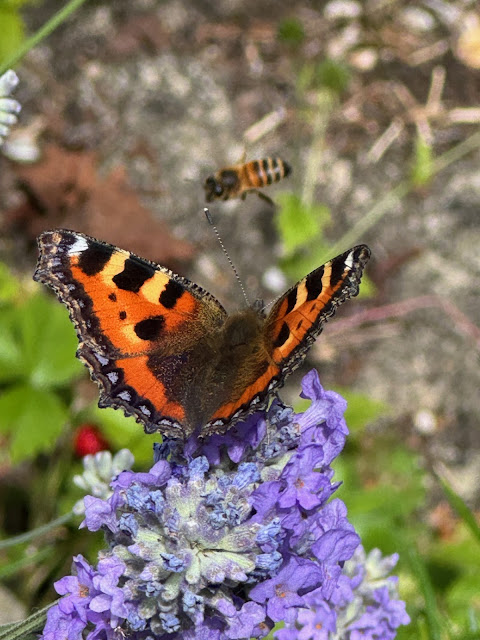Degustabox is a monthly food and drink subscription box. It's an excellent way of discovering new products which have only just appeared in the shops, or those which have been around for a while, but you haven't had a chance to try them yet.
Thanks to Degustabox, I have found new favourites to add to our shopping list, including some products which I otherwise wouldn't have tried.
Each time a monthly box arrives, its contents are a total surprise. You get a good selection of foods and drinks.
If you haven't tried Degustabox subscription box yet, and would like to have a go, I have a £3off discount from your first box (and you can unsubscribe any time), just use code DKRLN when placing an order.
What did we get in May Box Degustabox?
Cirio Polpa Finissima (£1.50) is the Product of the Month. This is the latest addition to the impressive Cirio range of tomato-based products.
Cirio Polpa is an extra finely cut tomato pulp, which retains all the natural flavour of 100% Italian freshly picked tomatoes. Carefully prepared with selected tomatoes that are finely chopped and enrobed in thick rich sauce.
You can always trust Cirio to give an authentic taste of Italian cuisine in your own kitchen.
What mouthwatering meal will you cook? Pizza, pasta, oven-baked dishes?
Available in Ocado and Morrisons since 12 May.
Batchelors Super Noodles Air (£1.45) are new noodles from Batchelors, that are air dried and not fried.
High in fibre, low fat and a source of protein, these noodles are ready in just five minutes. You should receive two items - Super Noodles Chicken Flavour and Super Noodles BBQ Beef Flavour.
Nutritional values: 138kcal and 0.73g of salt (chicken) and 139kcal and 0.64g of salt (BBQ) per 1/2 pack.
Available in the major supermarket chains.
Each pack is supposed to contain 2 portions, which we've never realised.
My younger son is a Noodles King, and was happy to eat the whole lot. As you can see, it's not exactly a ginormous portion. He also likes to add an egg and some spring onions to his meal.
Lorenz Crunchips X-cut Paprika 75g (£1.75) are paprika-flavoured crinkle cut potato crisps.
These crunchy crisps are full of flavour and are great on texture. Lovely with creamy dips, or on their own.
Nutritional information: 519kcal and 1.4g of salt per 100g; gluten free.
Widely available in world food sections, across independent and symbol group convenience stores.
Proper Mature Cheddar Propercorn (£1.90) is a new flavour of Propercorn, made with mature Cheddar cheese flavouring.
Mixed reviews in our family. I love popcorn, and I love cheese, but perhaps not together. Saying that, my guys rather enjoyed it. Have you tried this new flavour?
Nutritional values: 91kcal and 0.47g of salt per 20g (one pack is approximately 3 servings); high in fibre, gluten free, B corp, natural flavouring.
Available in Tesco, Sainsbury's, Morrisons, ASDA and Ocado.
The Hungry Boar Flamin' Piri Piri Sticklers (£1.50) are filled pork sticks, well seasoned, smoked and dried.
A good source of protein, these snacks deliver hits of heat and flavour.
Nutritional values: 451kcal and 4g of salt per 100g (one pack is 50g).
Available in Tesco and selected convenience stores.
Cape Herb & Spice Greek Style Lemon & Herb Rub (£3.75) is an exciting seasoning mix.
This aromatic blend of iconic Greek Flavours is great with lamb, chicken and potatoes. If you're not keen on roasts, use this mix to flavour a salad dressing, or when cooking fresh fish.
Blend a helping of the mix with olive oil and rub over your preferred cut of meat for marinading.
Ingredients include: sea salt, dried rosemary, roasted garlic, black peppercorns, dried oregano, dried lemon peel, dried spearmint, natural lemon flavouring etc.
Availble in Tesco, Sainsbury's and Morrisons.
Pelagonia Chargrilled Aubergine Slices (£3.20) is a versatile product for a variety of recipes, from pasta to salads, from meze sharing boards to antipasti. These wonderfully smoky slices of chargrilled aubergines are just perfect as a bruschetta topping.
Nutritional values: 112kcal and 1.34g of salt per 100g; gluten free.
Available at Ocado, Co-Op and Booths.
Mixologist's Garden Freeze-Dried Strawberry Slices (£2.50) are a fruity garnish for a cocktail or mocktail.
Ingredients: 100% strawberries. Enjoy with sparkling wine and ice.
Nutritional values: 310kcal and 61g of sugar per 100g (one pack is 10g).
Available in Tesco, Amazon, East of England Co-Op and on www.mixologistsgarden.com.

Nestle KitKat 4 Finger Hazelnut chocolate bar 41.5g (£0.85) - is a tasty bar of crispy wafer fingers covered with milk and dark chocolate with a hazelnut filling.
1 bar = 1 serving
Nutritional values: 209kcal and 20.5g of sugar per serving.
Made with Rainforest Alliance certified cocoa.
Available in the major supermarket chains.
We enjoy seeing new KitKats flavours and sizes, though we'd love to see the European KitKats to catch up with the Japanese immense variety of colours and flavours.
Creative Nature Apple & Cinnamon Oatie Snack Bar (£1.40, see above) is a wholesome snack which combines natural ingredients with a touch of warming spice.
Free from the top 14 allergens (gluten, dairy, nuts, etc), this bar is also vegan, kosher, and contains no added sugar or artificial sugars.
Nutritional information: 85kcal and 12g of sugar per 30g bar.
It's a lovely healthy snack that everyone can enjoy, at home or outdoors, on the go.
Available on the Creative Nature website - https://creativenaturesuperfoods.co.uk/product/apple-cinnamon-box/
SqueezeIt Blue Rasberry/Bubblegum (£0.69) are still juice drinks with spring water.
Coming in bright coloured soft squeezy bottles, these fun drinks are refreshing and vibrant.
Made with sweeteners (aspartame and saccharin). Too sweet for my personal taste, but my sons enjoyed the drinks.
Available in ASDA, B&M, Home Bargains, Iceland and many more.
You should receive 2 items in your box.
And that's it for May. What a fun box!


























































